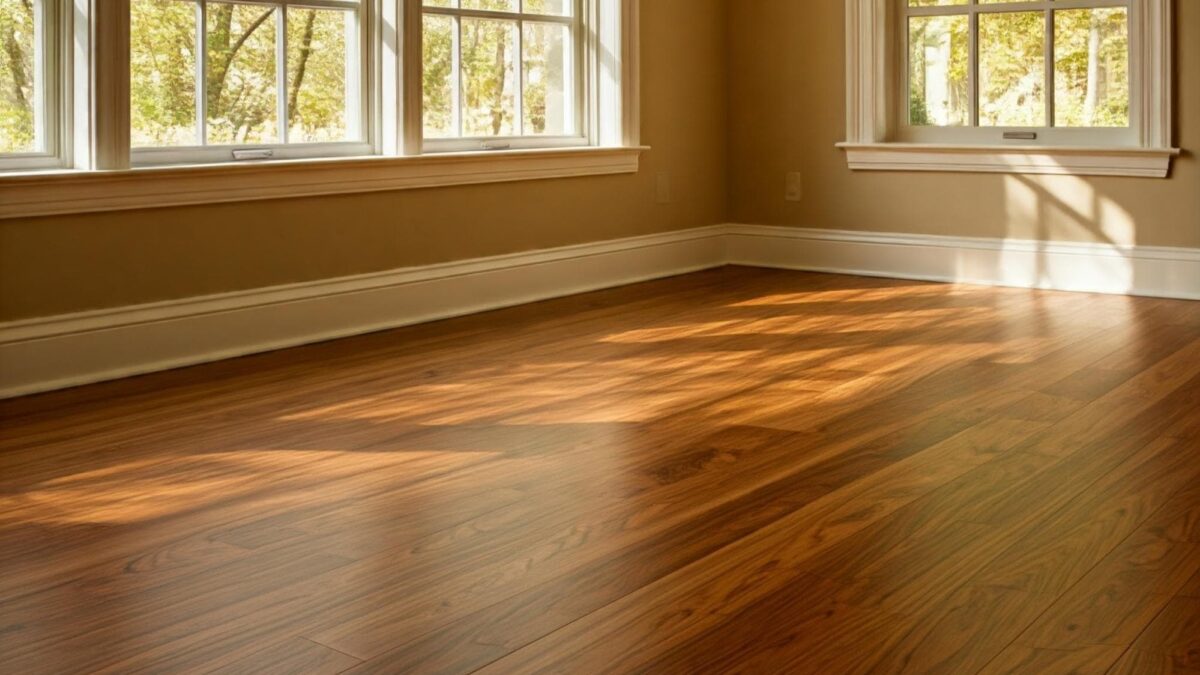Laminate flooring is a popular choice for homeowners seeking a durable, affordable, and stylish flooring solution. But how much does laminate flooring installation actually cost? Understanding the factors that influence pricing is crucial for planning your budget and making informed decisions about your flooring project, especially for those considering laminate flooring installation in Chicago. This article breaks down the key elements that affect pricing, helping you navigate the world of laminate flooring and achieve your dream floors without overspending.
Why Choose Laminate Flooring?
Before we delve into the cost specifics, let’s highlight what makes laminate flooring Chicago an attractive option for many homeowners:
- Affordability: Laminate flooring is generally less expensive than hardwood or tile, making it a budget-friendly choice.
- Durability: Laminate is designed to withstand scratches, stains, and wear and tear, making it suitable for high-traffic areas and busy households.
- Easy Maintenance: Laminate floors are easy to clean and maintain, requiring only regular sweeping and occasional damp mopping.
- Wide Variety of Styles: Laminate flooring comes in a vast array of styles, colors, and patterns, mimicking the look of natural materials like wood and tile.
- DIY-Friendly Installation: Many homeowners find laminate flooring relatively easy to install themselves, potentially saving on labor costs.
Factors That Influence Laminate Flooring Installation Cost
1. Type of Laminate Flooring
The type of laminate flooring you choose significantly impacts the overall cost.
- Quality and Thickness: Laminate flooring comes in varying thicknesses and quality levels. Thicker planks with a higher-quality wear layer (the protective top layer) will generally be more expensive but offer greater durability and longevity.
- AC Rating: The Abrasion Class (AC) rating indicates the flooring’s resistance to wear and tear. Higher AC ratings (AC3, AC4, AC5) signify greater durability and often come with a higher price tag.
- Features: Some laminate flooring options have additional features that can affect the cost, such as attached underlayment, enhanced moisture resistance, or built-in soundproofing.
2. Subfloor Preparation
The condition of your subfloor plays a crucial role in installation costs.
- Leveling: If your subfloor is uneven, it will need to be leveled before the new flooring can be installed. This adds to the labor and material costs.
- Repairs: Any necessary repairs to the subfloor, such as replacing damaged sections or addressing moisture issues, will also increase the overall cost.
- Moisture Barrier: If you’re installing laminate flooring over a concrete subfloor, a moisture barrier is necessary to prevent moisture damage to the laminate planks.
3. Installation Method
While laminate flooring is often DIY-friendly, the complexity of the installation method can influence labor costs if you choose to hire a professional.
- Click-Lock: Most laminate flooring uses a click-lock system for easy installation. This method is generally faster and less expensive than glue-down installations.
- Glue-Down: Some laminate flooring requires glue for installation. This method can be more time-consuming and may incur higher labor costs.
4. Room Size and Complexity
The size and complexity of the installation area also influence the cost.
- Square Footage: Larger rooms require more materials and labor, increasing the overall cost.
- Room Shape: Rooms with irregular shapes or numerous corners may require more intricate cutting and fitting, adding to labor costs.
- Transitions: Transitions between different flooring types or rooms require additional materials and labor.
- Stair Installation: Installing laminate flooring on stairs is more complex and time-consuming than installing it on a flat surface, resulting in higher labor costs.
5. Labor Costs
If you choose to hire a professional installer, labor costs will vary depending on:
- Installer’s Experience: Highly experienced installers may charge higher rates.
- Project Complexity: Intricate patterns or challenging layouts increase labor costs.
- Geographic Location: Labor costs can vary by region. For example, laminate flooring installation Chicago costs might differ from those in other areas due to variations in cost of living and demand for skilled labor.
6. Additional Expenses
- Underlayment: Provides cushioning, sound absorption, and moisture protection.
- Transitions: Used to create smooth transitions between different flooring types or rooms.
- Trim: Baseboards, quarter-round molding, and shoe molding add a finished look.
- Furniture Removal: If you need help moving furniture, this will add to the cost.
- Old Flooring Removal and Disposal: Removing and disposing of old flooring incurs additional costs.
Tips to Manage Laminate Flooring Installation Costs
- Choose Cost-Effective Options: Consider laminate flooring with a lower AC rating if your room doesn’t experience heavy traffic.
- Prepare Your Subfloor: Addressing subfloor issues before installation can help you avoid unexpected costs.
- Get Multiple Quotes: Obtain quotes from several flooring installers to compare pricing and services.
- Consider DIY: If you’re comfortable with DIY projects, installing laminate flooring yourself can save on labor costs.
- Shop Around for Materials: Compare prices from different flooring suppliers to find the best deals on laminate flooring.
Conclusion
Laminate flooring installation offers an affordable and stylish flooring solution for homeowners. By understanding the factors that influence cost, you can make informed decisions and plan your budget effectively. Whether you’re seeking laminate flooring in Chicago or elsewhere, consider the type of laminate, quality, installation method, subfloor condition, and labor costs to ensure you get the best value for your investment.


